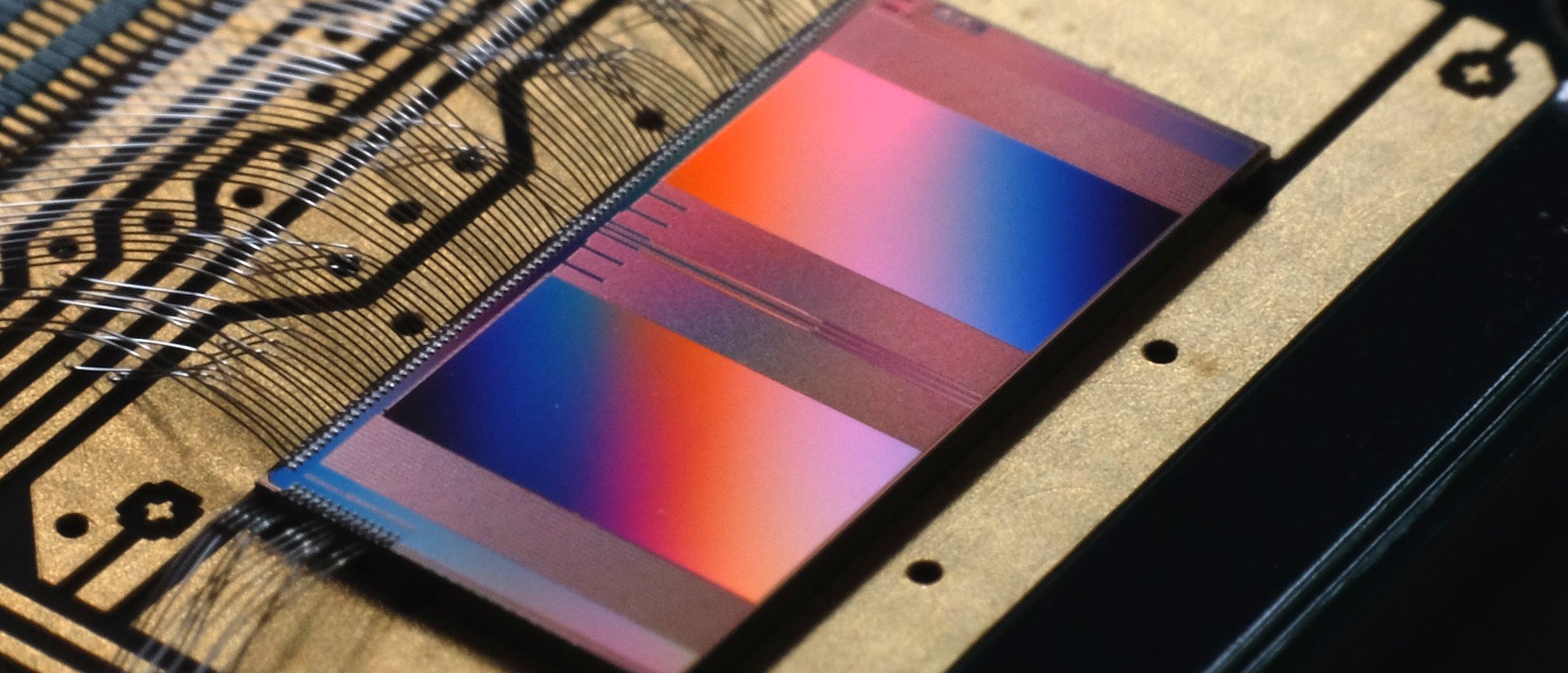
EBRAINS Neuromorphic platform BrainScaleS-2 adds new interface for high-speed robotics

Close-up view of a BrainScaleS-2 chip. IMAGE: Heidelberg University
Their work, detailed in a recent paper published in Frontiers in Neuroscience, introduced a real-time spike interface to the neuromorphic platform BrainScaleS-2 (BSS-2). This innovation enables advancements in high-speed robotics applications, due to a 1,000-fold acceleration of the emulated nerve cells.
The biological brain shows very high speed and efficiency when processing complex operations and enabling cognitive functions. Neuromorphic computing tries to replicate aspects of the structure and function of the brain to achieve this efficiency, and holds promise for robotics applications.
Robotics can benefit from spiking neural networks (SNNs) due to them being more energy-efficient than traditional neural networks, and because their biological inspiration can lead to better cognitive capabilities in robotics systems. SNNs are also capable of processing information in precise timing, which is crucial for tasks such as motion detection or speech recognition in robotics.
The BrainScaleS-2 system is a neuromorphic platform with versatile applications in the fields of computational neuroscience and spike-based machine learning. It is based on emulations of neurons, running at 1,000x biological real-time speed and available as a single-chip system. This acceleration allows the system to tackle robotic tasks far beyond human speed, enabling precise timing on a microsecond scale. Researchers have free access to the system via EBRAINS.
In a demonstration of the capabilities of this new interface, the researchers used machine-learning techniques to train a spiking neural network (SNN) – an artificial neural network that mimics a biological one – emulated on the BSS-2 platform to control a type of electric motor.
Yannik Stradmann, a researcher at the Kirchhoff Institute for Physics (Heidelberg University) and author of the paper, emphasises the versatility of the newly enhanced system: “The interaction of an artificial brain, processing information 1,000 times faster than humans, with the real world gives rise to many interesting scientific and technological questions. We envision this platform to enable future research on self-supervised and biologically inspired online learning for such applications.”
“The interaction of an artificial brain, processing information 1,000 times faster than humans, with the real world gives rise to many interesting scientific and technological questions. We envision this platform to enable future research on self-supervised and biologically inspired online learning for such applications.”
Researcher at the Kirchhoff Institute for Physics (Heidelberg University)
Read the original paper:
Closing the loop: High-speed robotics with accelerated neuromorphic hardware
Yannik Stradmann, Johannes Schemmel.
Kirchhoff-Institute for Physics, Heidelberg University, Germany
News & events
All news & events- Science and technology20 Dec 2024


- News20 Dec 2024

